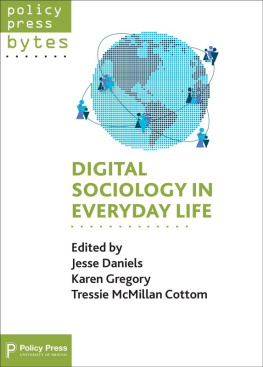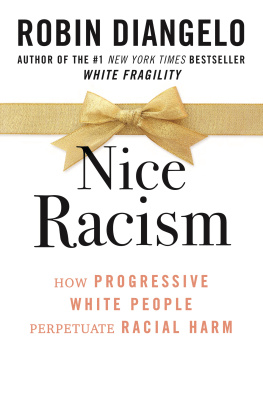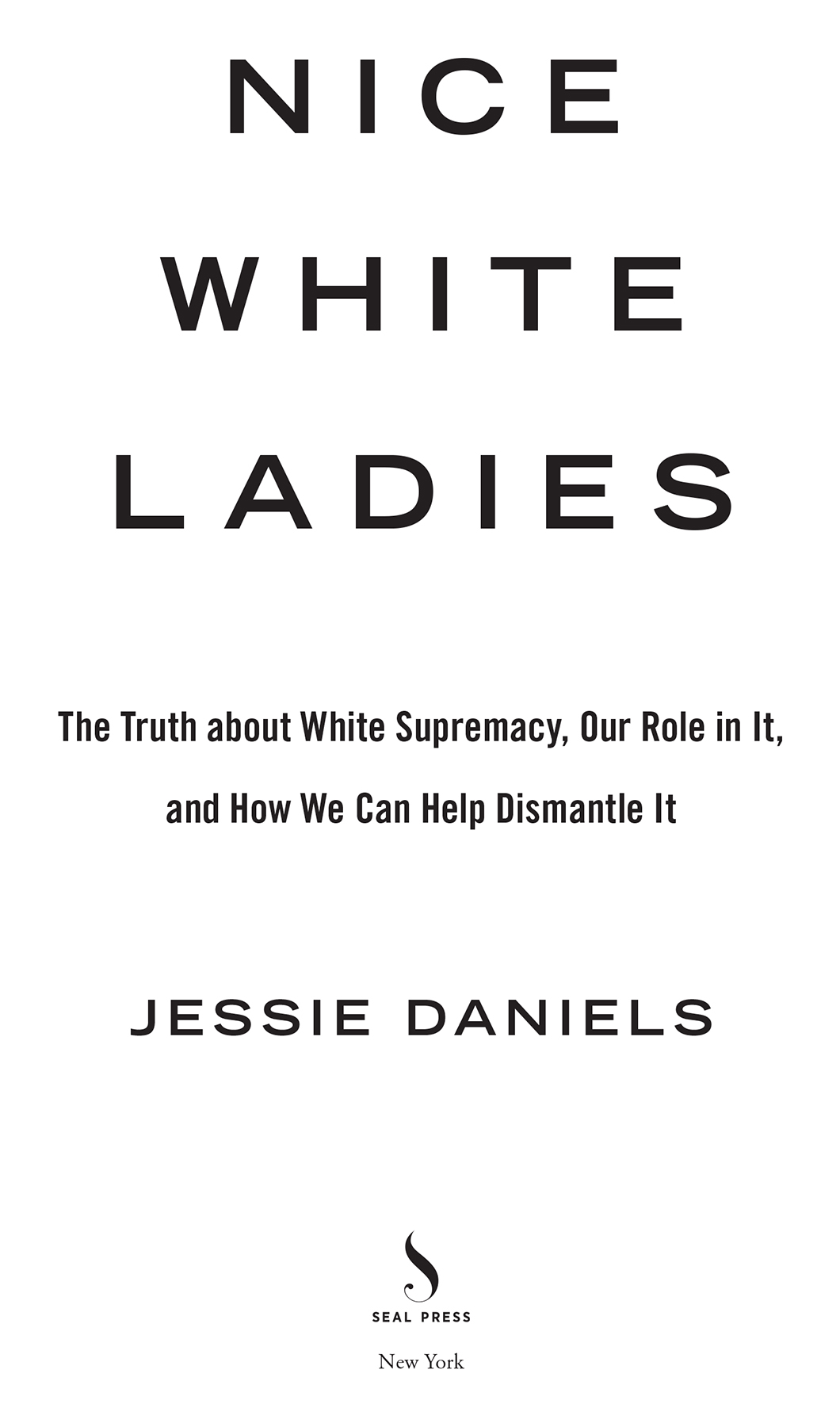
Copyright 2021 by Jessie Daniels
Cover design by Ploy Siripant
Cover image Peter Dazeley via Getty Images
Cover copyright 2021 Hachette Book Group, Inc.
Hachette Book Group supports the right to free expression and the value of copyright. The purpose of copyright is to encourage writers and artists to produce the creative works that enrich our culture.
The scanning, uploading, and distribution of this book without permission is a theft of the authors intellectual property. If you would like permission to use material from the book (other than for review purposes), please contact permissions@hbgusa.com. Thank you for your support of the authors rights.
Seal Press
Hachette Book Group
1290 Avenue of the Americas, New York, NY 10104
www.sealpress.com
@sealpress
First Edition: October 2021
Published by Seal Press, an imprint of Perseus Books, LLC, a subsidiary of Hachette Book Group, Inc. The Seal Press name and logo is a trademark of the Hachette Book Group.
The Hachette Speakers Bureau provides a wide range of authors for speaking events. To find out more, go to www.hachettespeakersbureau.com or call (866) 376-6591.
The publisher is not responsible for websites (or their content) that are not owned by the publisher.
Library of Congress Cataloging-in-Publication Data
Names: Daniels, Jessie, 1961- author.
Title: Nice white ladies : the truth about white supremacy, our role in it, and how we can help dismantle it / Jessie Daniels.
Description: New York City : Seal Press, 2021. | Includes bibliographical references.
Identifiers: LCCN 2021009415 | ISBN 9781541675865 (hardcover) | ISBN 9781541675858 (epub)
Subjects: LCSH: Women, White--United States--Attitudes. | White supremacy movements--United States. | Racism--United States. | United States--Race relations. | Social justice--United States.
Classification: LCC HQ1410 .D36 2021 | DDC 305.800973--dc23
LC record available at https://lccn.loc.gov/2021009415
ISBNs: 978-1-5416-7586-5 (hardcover), 978-1-5416-7585-8 (ebook)
E3-20210903-JV-NF-ORI
For Emmett Till and Markis, Hannah, Abigail, Devonte, Jeremiah, and Ciera and For Shirley
Explore book giveaways, sneak peeks, deals, and more.
Tap here to learn more.

Id like to be a spoiled rich white girl.
Venus Xtravaganza
N ice white ladies, and our protection, are fundamental to American culture. And this fact is destroying all of us. You should know that I, myself, am a white woman. I have been helped in my career by many nice white ladies, some of them feminists. I come from a long line of white women ancestors, none of whom would have ever identified as a feminist. When I enter a room, people assume I am a nice white lady. No one can tell just by looking at me that I have spent half my life in a conscious effort to not be a nice white lady. I have learned to disavow the niceness that is a cover for ignoring the pain of others, to distance myself from the safe emptiness of whiteness, and to detox from the poison of ladyhood. Yet, this is what the women in my family hoped for, for me, this narrow dream of nice white ladyhood.
The other thing that you should know about these women I come from, my ancestors in Texas, is that none of them made it past the eighth grade in school. All of them were married by the time they were fifteen years old, and as a point of pride they would have me tell you, not one of those was a shotgun wedding. All of the women I come from were mothers by the time they were sixteen years old.
Not me. I went after as much education as the state of Texas had on offer, divorced a couple of husbands without bearing any children, and found myself in a clutch of radical lesbian feminists. Along the way, I discovered that I was whitemy father had told me I was Cherokee. I didnt fully realize I was white until fairly late in life, in my twenties, when I started reading books by people who were actually Indigenous who pointed out how very common it was for white people to claim Cherokee ancestry when there was none. When I would ask my mother, What are we? she seemed less interested in ethnic heritage than my father and would dismiss my question with a quick Scotch-Irish, I think. She did not entertain follow-up questions. Go play outside was her most common response to my inquiries, genealogical or otherwise.
In a family photo from 1962, I am the baby held in my great-grandmothers arms. She wears a dress with a floral print, a belt cinched snug under her bosom, wire frame glasses, gray hair swept back in a bun, sensible shoes that lace up the front. What you cannot see in this photo is the tin she carries, a repurposed Vienna Sausages can that she uses to spit out chewing tobacco. My cousins and I called her Little Granny because she was quite short and continued to shrink as she aged. It was a rite of passage for each one of us eleven cousins to mark the point at which we grew taller than Little Granny.
Next to her in the photo is my grandmother, Big Granny, because she is taller than her mother by a couple of inches. She is a stout woman, funny sometimes, and mean. In the photo, she wears moderately high heels and a dress cut the same as Little Grannys but in a geometric print. The dresses are so similar I suspect that they are homemade by one of them, both expert seamstresses. Next to Big Granny in the photo is my mother, the tallest by several inches, slim, and chic in dark sunglasses, shorts, and a shirt with giant polka dots and matching sandals. I do not know the particular details of when the photo was taken or what prompted this self-conscious documentation of four generations of our family, but I think about this photo often. I sometimes use it when I give talks about white women and white feminism, because it so clearly locates me at the end of this line of white women who raised me and it makes me think about how very different my life is from theirs.
Just as I inherited this constellation of identities that I have chosen to interrogate and reject, similarly, I want this book to challenge and subvert both whiteness and ladyhood. This book is not merely an intellectual exercise. Instead, the stakes here are deeply personal for me. I have experienced the destructiveness of whiteness firsthand, in suicide and failed relationships and intergenerational trauma. For me, telling the truth about white supremacy and working to end it are interlaced with my own liberation and yours. I want this book to be a catalyst for dismantling the systemic racism that we, nice white ladies, have upheld. And I want this book to help women raised white to reach beyond the strictures of niceness and the constraints of ladyhood to experience their full humanity and to join the rest of us working toward a better world for everyone.
Although this book is about the distinctive role of white women, from the right to the left on the political spectrum, it is a book meant to be read by everyone. If you are not a white woman, you may have been raised by, worked for, dated, or married someone who was, or perhaps youre simply curious about the many cultural products that feature white women so prominently. Most of the examples in this book are drawn from the American or British context because of the outsized influence of those two nations. But it is meant for readers beyond those borders because those cultures, designed with white womens protection in mind, through very real ways are often destructive to people from the Global South. Further, the intertwined notions of hot, thin blondes and who is considered a good mother and who gets to keep the children they give birth to are part of the reverence for the supposed specialness of white women, and these ideas circulate globally. I want this book to chip away at these burdensome notions that white women as a category are somehow more beautiful, more deserving of protection, or more nurturing than anyone else. I want this to be an invitation to everyone to resist this pernicious set of ideas.











